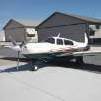another fuel pressure question
-
Members Online
- Andy95W
- ta2too
- Trogdor
- TangoTango
- Stubby
- eman1200
- slowflyin
- clh
- thomas1142
- Kirch56H
- liamisaac612
- stlcg
- jlunseth
- DXB
- Phil123
- Jeff Uphoff
- redbaron1982
- Guillaume
- Sabremech
- good2eat
- Jamildmc
- Jake@BevanAviation
- Jim F
- Utah20Gflyer
- tlhoward706
- Rush McKelvey
- P320
- 201er
- SKI
- Rwsavory
- 1980Mooney
- tclimb
- G-Force Mx
- N201MKTurbo
- lotsofgadgets
- Joe Linnebur
- PeterRus


Recommended Posts